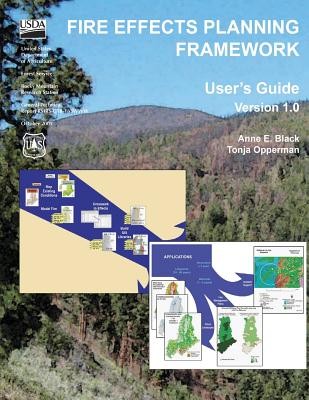
- We will send in 10–14 business days.
- Author: United States Department of Agriculture
- Publisher: CreateSpace Independent Publishing Platform
- ISBN-10: 151160753X
- ISBN-13: 9781511607537
- Format: 21.6 x 28 x 0.4 cm, softcover
- Language: English
- SAVE -10% with code: EXTRA
Fire Effects Planning Framework (e-book) (used book) | bookbook.eu
Reviews
Description
Each decision to suppress fire reinforces a feedback cycle in which fuels continue to accumulate, risk escalates, and the tendency to suppress fires grows (Miller and others, 2003). Existing decision-support tools focus primarily on the negative consequences of fire. This guide outlines a framework managers can use to (1) identify key areas of fire risk and (2) systematically determine where and under what fire weather conditions fire will benefit ecological conditions and management targets while reducing fuels. The Fire Effects Planning Framework (FEPF) sequentially links state-of-the-art, publicly available analysis tools, data, and knowledge to generate GIS-based planning information for a variety of scales. Primary funding for this effort was provided by the Joint Fire Science Program and the National Fire Plan.
EXTRA 10 % discount with code: EXTRA
The promotion ends in 18d.20:13:18
The discount code is valid when purchasing from 10 €. Discounts do not stack.
- Author: United States Department of Agriculture
- Publisher: CreateSpace Independent Publishing Platform
- ISBN-10: 151160753X
- ISBN-13: 9781511607537
- Format: 21.6 x 28 x 0.4 cm, softcover
- Language: English English
Each decision to suppress fire reinforces a feedback cycle in which fuels continue to accumulate, risk escalates, and the tendency to suppress fires grows (Miller and others, 2003). Existing decision-support tools focus primarily on the negative consequences of fire. This guide outlines a framework managers can use to (1) identify key areas of fire risk and (2) systematically determine where and under what fire weather conditions fire will benefit ecological conditions and management targets while reducing fuels. The Fire Effects Planning Framework (FEPF) sequentially links state-of-the-art, publicly available analysis tools, data, and knowledge to generate GIS-based planning information for a variety of scales. Primary funding for this effort was provided by the Joint Fire Science Program and the National Fire Plan.


Reviews